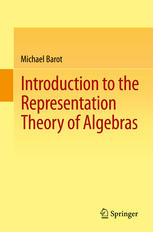

Most ebook files are in PDF format, so you can easily read them using various software such as Foxit Reader or directly on the Google Chrome browser.
Some ebook files are released by publishers in other formats such as .awz, .mobi, .epub, .fb2, etc. You may need to install specific software to read these formats on mobile/PC, such as Calibre.
Please read the tutorial at this link: https://ebookbell.com/faq
We offer FREE conversion to the popular formats you request; however, this may take some time. Therefore, right after payment, please email us, and we will try to provide the service as quickly as possible.
For some exceptional file formats or broken links (if any), please refrain from opening any disputes. Instead, email us first, and we will try to assist within a maximum of 6 hours.
EbookBell Team

0.0
0 reviewsThis book gives a general introduction to the theory of representations of algebras. It starts with examples of classification problems of matrices under linear transformations, explaining the three common setups: representation of quivers, modules over algebras and additive functors over certain categories. The main part is devoted to (i) module categories, presenting the unicity of the decomposition into indecomposable modules, the Auslander–Reiten theory and the technique of knitting; (ii) the use of combinatorial tools such as dimension vectors and integral quadratic forms; and (iii) deeper theorems such as Gabriel‘s Theorem, the trichotomy and the Theorem of Kac – all accompanied by further examples.
Each section includes exercises to facilitate understanding. By keeping the proofs as basic and comprehensible as possible and introducing the three languages at the beginning, this book is suitable for readers from the advanced undergraduate level onwards and enables them to consult related, specific research articles.